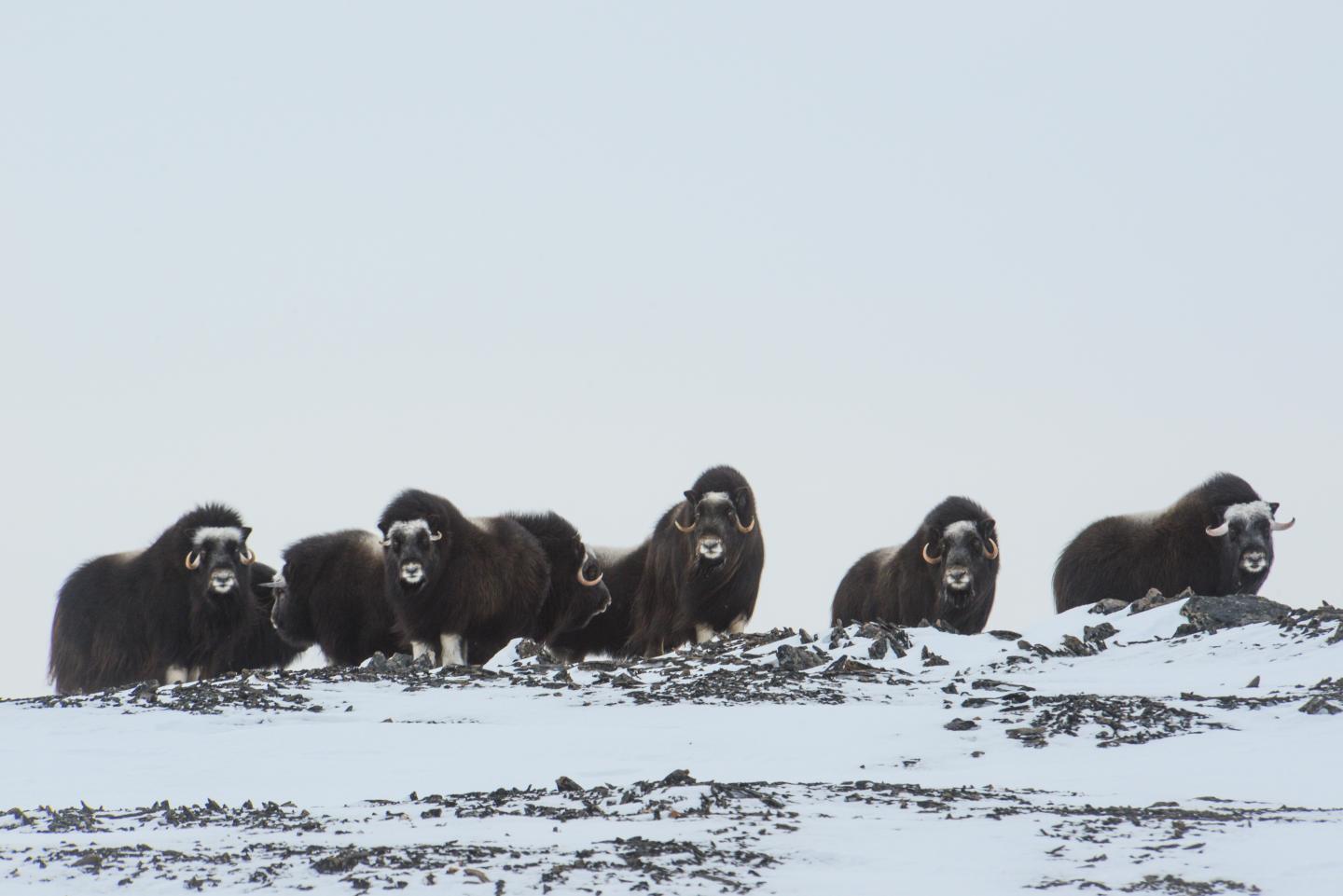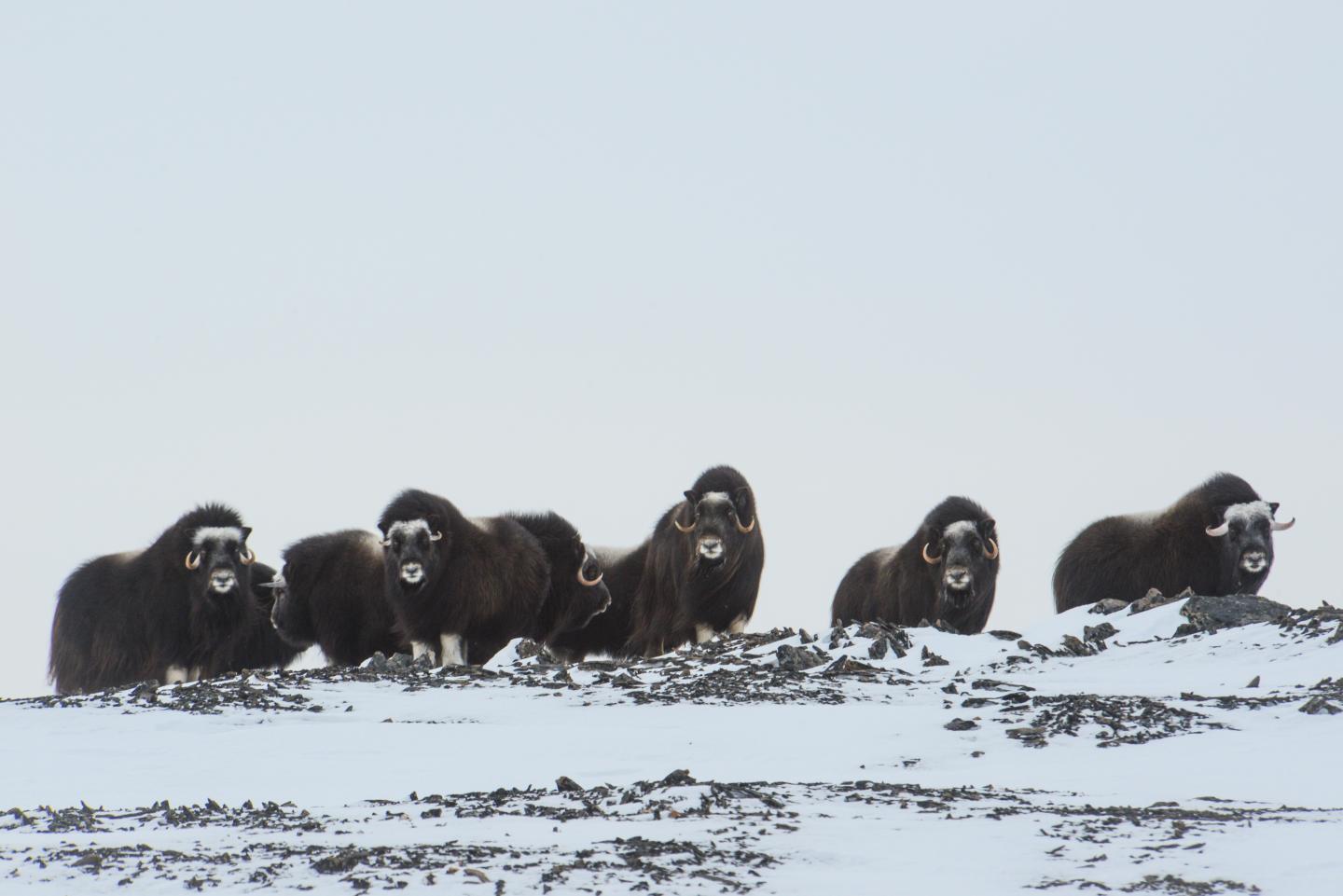
Credit: Joel Berger/ Colorado State University
Despite the growth in knowledge about the effects of a warming Arctic on its cold-adapted species, how these changes affect animal populations is poorly understood. Research efforts have been hindered by the area's remoteness and complex logistics required to gain access.
A new study led by Joel Berger, professor in the Department of Fish, Wildlife and Conservation Biology at Colorado State University, has uncovered previously unknown effects of rain-on-snow events, winter precipitation and ice tidal surges on the Arctic's largest land mammal, the muskoxen.
The warmer climate is stressing mothers and young muskoxen, said Berger, also a senior scientist with the Wildlife Conservation Society. Rain-on-snow events occurring in the winter — when muskoxen gestate — and unusually dry winter conditions have also led to underdeveloped skeletal growth in juvenile muskoxen. This effect can be traced back to their pregnant mothers.
"When rain-on-snow events occur in the Arctic, due to warming temperatures, and the snow freezes again, this leads to mothers not being able to access food for adequate nutrition," said Berger. "The babies then, unfortunately, pay the price."
The smaller size observed in juvenile and young adult muskoxen is associated with poorer health and fitness, due to delayed puberty, and increased mortality, according to the research team.
In addition, scientists documented a mass mortality event due to a one-time extreme ice event caused by a tidal surge. In February 2011, an historically high tidal surge resulted in at least 52 muskoxen being submerged at the northern coast of Bering Land Bridge peninsula.
Researchers also found historical records documenting deaths due to rapid freezing and thawing during winter at a range of single sites of whales — 170 Beluga and 150 narwhals — and sea otters along the Aleutian Islands.
"Unlike polar bears, which are on the world's stage, no one really knows about muskoxen or cares," said Berger. "They roamed with wooly mammoths but still survive. Muskoxen are feeling the heat, just as we humans are feeling the extremes of climate. These wild weather swings have massive impacts on us. Solutions are clear, but we fail to respond by changing our consumptive ways."
Measuring a muskox, tracking temperatures
The research team analyzed head size of juvenile muskoxen using digital photo data over the span of seven years and at three sites in Alaska and Russia. They also compiled winter weather data for the Alaskan sites from the closest weather stations maintained by the National Oceanic and Atmospheric Administration. Data used to calculate rain-on-snow events on Wrangel Island, located in the Arctic Ocean, between the Chukchi Sea and East Siberian Sea, were from the Federal Hydro-meteorological Service of Russia, whose records date back to 1926.
Berger acknowledged the role his research plays "in a challenging political era." His collaborators include Russian scientists in Asia and the Alaskan Arctic. Berger is not only a researcher, but he also serves as a diplomat of sorts, working closely with Russian research counterparts and the government. He praised them for their active engagement and willingness to share data.
"To better understand how species like the muskoxen are responding to a changing Arctic, we must collaborate, so that we can document rare and often tragic events, and gain additional insight from local people," said Berger.
###
The study, "Climate degradation and extreme icing events constrain life in cold-adapted mammals," was published in Scientific Reports, an online open access journal from the publishers of Nature.
Co-authors of the study include Cynthia Hartway, Wildlife Conservation Society and South Dakota State University; Alexander Gruzdev, Wrangel Island World Heritage Site; and Michael Johnson, U.S. Forest Service in Juneau, Alaska.
Media Contact
Mary Guiden
[email protected]
970-491-6892
@ColoStateNews
Home
Related Journal Article
http://dx.doi.org/10.1038/s41598-018-19416-9





